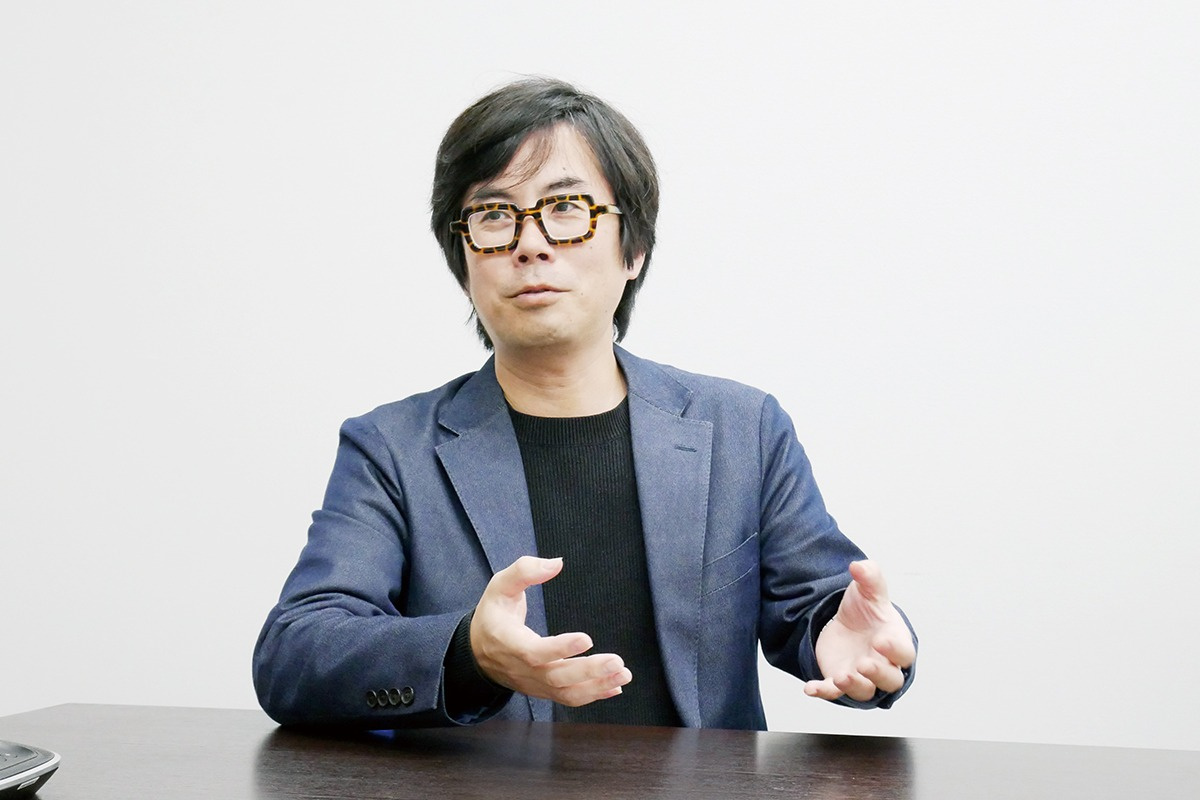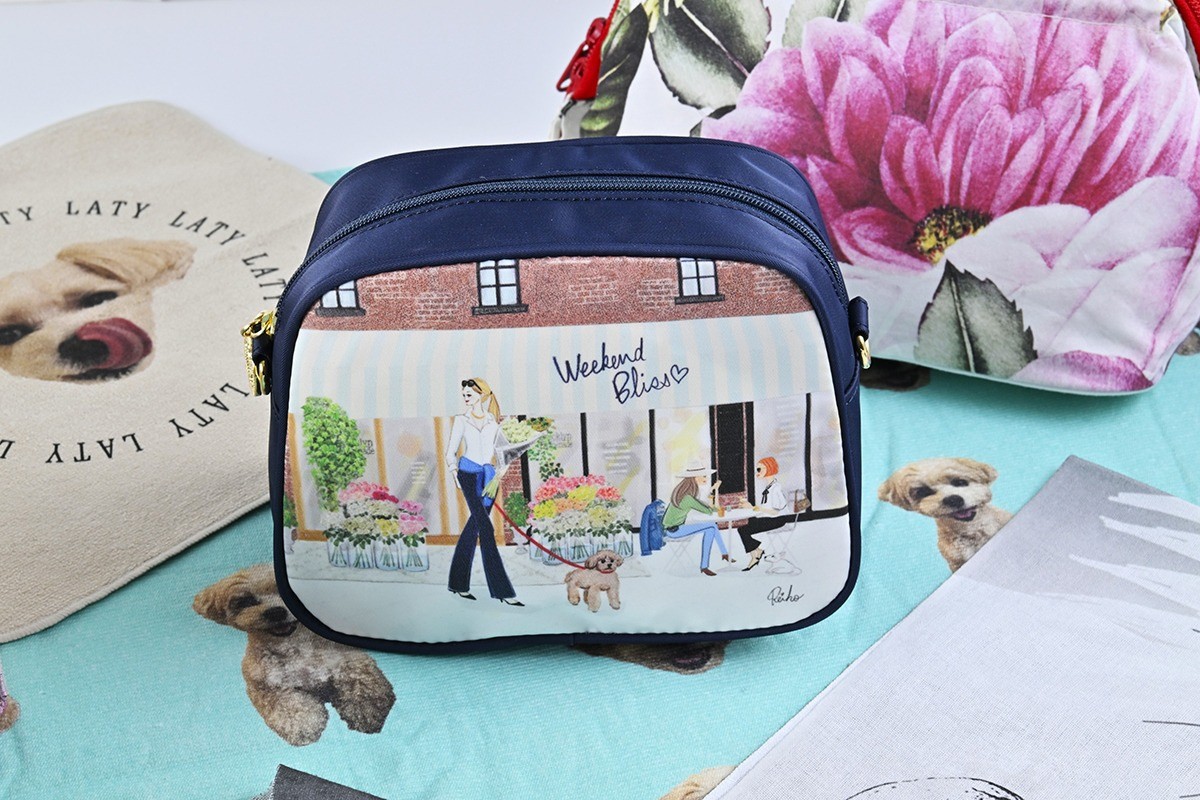Further enhance digital quality by the eyes of artisans sticking to “color”

Ms. Akiko Nishida, President & CEO / Mr. Yohei Ohashi, Director & Factory Manager
Conclusive fact in introducing Tx500-1800B
- Print on natural materials including cotton, hemp, and silk
- Wide color gamut with 8 color inks loaded
Having continued to dye custom-made articles in Kyoto, the city of dye
Supported by rich river-bed water, Kyoto has developed the culture of “dye” since early times. Nishida Sosen Kojo was founded in 1933. I am the 3rd President. My grandfather launched the dye house in the prewar and postwar turbulent period. Since then, it has continued to dye unique custom-made articles such as hangings for temples, banners for shrines, store curtains, flags, etc.
We have been working with MIMAKI since we started digitalization. Previously, drafts used to be handwritten or block copies. We started to digitize them in-house, and introduced a cutting plotter which enables to create stencils directly from a computer. That was our departure for digitalization. Before the introduction, artisans used to cut them all by hand. So the change was a breakthrough at that time.


This exquisite print is an example of what digital printing can do.
Then, we introduced JV4. I still have a vivid recollection of the time when my father (current Chairman) showed me a textile printed by sublimation transfer in his hands, saying “This is a dream dyeing”.
Originally, the traditional honzome-dyeing method requires to create a stencil for each color, and there is a limit to the expressions; fine thin lines and complicated patterns, contact between colors, etc. On the other hand, sublimation transfer has no limits to design because it allows to output the data directly in full color. So it drastically extended our range of expression such as gradation and delicate color overlapping. It indeed is a dream dyeing, I would say.
Introduced Tx500-1800B to respond to customers' needs

We began to accumulate knowhow of sublimation transfer inkjet printer starting with JV4. It secured a strong position in the company as a tool to respond to customers’ needs including “small lot”, “short delivery”, and “low price”. However, as the transfer only supports polyester, we have not been able to meet the needs of customers who prefer cotton, hemp, silk, and other natural materials, which resulted in our failure to receive orders.
So we started to consider introduction of a machine that can print on natural materials, and chose Tx500-1800B as a candidate. We reviewed it together with products from other manufacturers for about 6 months. After narrowing down the candidates, Tx500-1800B was the only one we could see in actual operation. This did much to determine the model to purchase.
In introducing new equipment, we have to consider machine troubles and running cost as well, and most importantly, operability.
MIMAKI's machines had a good reputation for solid maintenance and were provided in a variety of price ranges, which made it the best choice for us.
Preserving the quality while responding to changes of the times

Tx500-1800B is a digital textile inkjet printer with belt conveying system. As it allows to print on natural materials such as cotton, hemp and silk, we can now fulfill the needs of customers whose requests had to be rejected before. The range of ordered products has been widened; we can now produce articles like silk scarf and wrapping cloth excellent in design. I am convinced that our company acquired another new technology to meet further needs of customers while maintaining “small lot”, “quick delivery”, and “low cost”.
The inks currently loaded to the machine are C (cyan), M (magenta), Y (yellow), and K (black) as basic 4 colors, and gray, blue, orange, and red as 4 complementary colors. With these 8 colors, we can widen the color gamut to a maximum extent, which enables us to focus on reproducing the exact color customers want.
Since we are a dye house, “color” is where it all started for us, the artisans. Every one of us sticks closely to color. Once we receive an order, we perform test prints as far as possible, and adjust the color until we are completely satisfied. Our way of production is never good in terms of efficiency, but this is what we are and where our routes are.
Whether digital or not, we will never forget our pride of dye house; focusing on “taking responsibility for customers' products” as artisans, and keep on preserving the “quality of Nishida Sosen Kojo” from here on out.
Aspiring for the world of even greater color with MIMAKI

Along with the increasingly accelerated technology development and changes in social circumstances, inkjet printers will make progress as well. Besides the machine specifications, when textiles are further developed, printers will require the technology to apply colors onto new textiles. It will also be expected to develop ecology-conscious inks from the aspect of safety and security.
If I may point out from the viewpoint of dyeing artisan, I still see some growth potential in the “color” of inkjet. When compared to traditional honzome-dyeing where the dyestuff enters deep inside the fibers, color of current inkjet is still depthless. I hope MIMAKI to keep on challenging for reproducibility to realize the exact color as intended. We would like to keep on meeting customers requests with traditional handwork by artisans and latest technology as two wheels on a single axle.
Nishidasousenkoujo Co., Ltd.
Founded in 1933. As a dye house in Kyoto, it has dyed plenty of one-of-a-kind “custom-made” articles such as banners, hangings, store curtains and flags. With a strong attachment to color as dyeing artisans, they face customers with “goodness, carefulness, and learning from the past” in mind while responding flexibly to digitalization.
<Introduced products>
Belt-type Direct-to-Textile Inkjet Printer : Tx500-1800B

Sometaro-kun who is the official character welcomes you.
User profile
- NameNishidasousenkoujo Co., Ltd.
- IndustryDyeing and production of a wide variety of original articles including custom-made dye goods such as flags, hangings, banners, hanten, and store curtains.
- Address67 Kamitobasugatacho, Minami-ku, Kyoto city, Kyoto, Japan
- Phone number+81-75-662-1822
- URLhttps://www.sometaro.co.jp/



